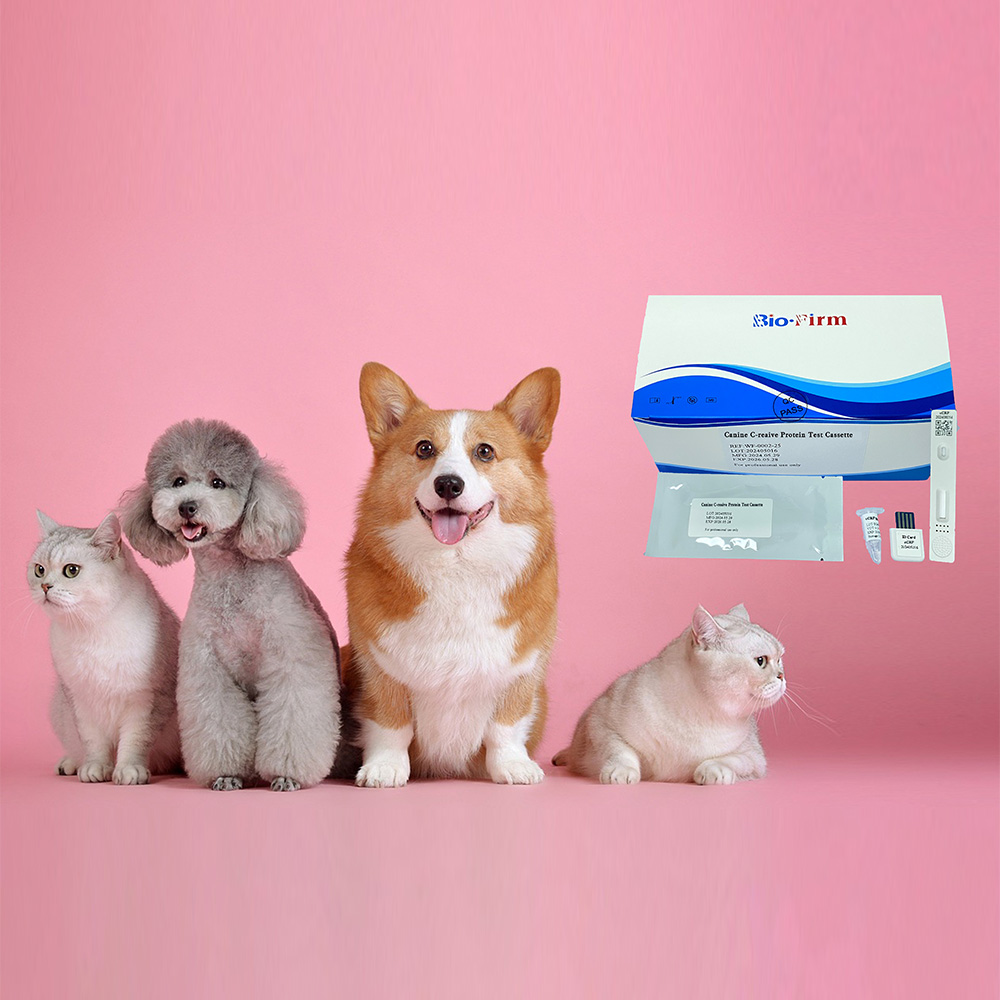Jul 01,2022
In veterinary fluorescence immunoassays (FIA), fluorescent probes or labels are used to enable the detection of specific antigens or antibodies within biological samples. These probes emit fluorescence when excited by a specific wavelength of light, and the emitted light is measured to determine the presence and concentration of the target molecule. The selection of fluorescent labels depends on factors like the sensitivity required, the type of target being detected, and the specific assay conditions. Some of the commonly used fluorescent probes or labels in veterinary FIA include:
1. Fluorescein Isothiocyanate (FITC)
Excitation/Emission: Excites at ~495 nm, emits at ~520 nm.
Use: FITC is one of the most widely used fluorescent dyes in immunoassays, especially for detecting antibodies. It is often used for labeling secondary antibodies or antigens.
Advantages: It has a relatively high quantum yield and can be used with many detection systems.
Limitations: FITC is sensitive to pH and can photobleach (lose its fluorescence) over time if exposed to light for too long.
2. Alexa Fluor Dyes
Excitation/Emission: Different Alexa Fluor dyes have varying excitation/emission wavelengths, such as Alexa Fluor 488 (excites at 495 nm, emits at 519 nm) and Alexa Fluor 647 (excites at 650 nm, emits at 668 nm).
Use: Alexa Fluor dyes are widely used in fluorescence-based assays, offering brighter and more stable signals compared to older fluorophores like FITC. These dyes have high resistance to photobleaching.
Advantages: They provide excellent signal brightness and stability, which makes them ideal for quantitative detection in complex biological samples.
Limitations: They can be more expensive than traditional fluorophores.
3. Green Fluorescent Protein (GFP)
Excitation/Emission: Excites at ~488 nm, emits at ~509 nm.
Use: GFP is a naturally occurring protein that emits fluorescence and is used for labeling and tracking cells or molecules in biological systems.
Advantages: GFP and its derivatives are very stable and can be used in live cell imaging or in field-based assays without the need for additional chemical labels.
Limitations: GFP requires gene incorporation, so it's mostly used in transgenic animals or cell culture systems rather than in direct wildlife diagnostics.
4. Rhodamine
Excitation/Emission: Excites at ~540 nm, emits at ~625 nm.
Use: Rhodamine dyes are used in various immunoassays, including FIA, to label antibodies or antigens. Rhodamine is often chosen for its strong fluorescence and ability to emit light at longer wavelengths, reducing interference from autofluorescence in biological samples.
Advantages: Rhodamine-based labels provide a high signal-to-noise ratio in assays and are especially useful in multicolor detection.
Limitations: Rhodamine is prone to photobleaching, although this can be mitigated with appropriate handling.
5. CyDye Dyes (e.g., Cy3, Cy5)
Excitation/Emission: Cy3 (excites at 550 nm, emits at 570 nm); Cy5 (excites at 650 nm, emits at 670 nm).
Use: CyDye fluorophores are used for highly sensitive immunoassays and are often used in multiplexed assays (where multiple targets are detected in a single sample).
Advantages: CyDye dyes offer high fluorescence intensity and are highly photostable, making them suitable for long-term imaging or high-throughput screening.
Limitations: They are relatively expensive, and like other fluorescent probes, can be sensitive to environmental conditions like pH and temperature.

6. Quantum Dots
Excitation/Emission: Varies based on size, with common wavelengths around 520 nm to 650 nm.
Use: Quantum dots are nanometer-sized semiconductor particles that can be engineered to emit fluorescence at specific wavelengths. They are used in highly multiplexed assays, where different sizes of quantum dots can emit at distinct wavelengths.
Advantages: Quantum dots have excellent brightness, stability, and a wide range of emission spectra, which allows for simultaneous detection of multiple targets.
Limitations: Quantum dots are more expensive, and their synthesis can be complex. Additionally, there are concerns about the potential toxicity of quantum dot materials in vivo, especially for wildlife applications.
7. Bodipy Dyes
Excitation/Emission: Bodipy dyes exhibit a wide range of excitation and emission maxima, with some common variants having excitation around 495 nm and emission around 510 nm.
Use: Bodipy dyes are versatile fluorescent probes that can be used in both small-molecule detection and immunoassays. They offer excellent photostability and high quantum yields.
Advantages: Bodipy dyes are stable, bright, and provide high sensitivity in assays.
Limitations: Some Bodipy derivatives can be sensitive to oxidation, and their use may require specific handling conditions.
8. Dylight Dyes (e.g., DyLight 488, DyLight 650)
Excitation/Emission: DyLight 488 (excites at 493 nm, emits at 518 nm); DyLight 650 (excites at 650 nm, emits at 670 nm).
Use: DyLight dyes are commonly used in immunoassays, particularly in applications where stable, bright signals are needed for detection in complex biological systems.
Advantages: DyLight dyes are bright, photostable, and come in a range of colors for multiplexing applications. They are also compatible with both enzyme-linked and fluorescence-based assays.
Limitations: Similar to other fluorophores, they can be more expensive than traditional dyes.
9. FITC and Rhodamine Conjugates (Dual-Labeled Probes)
Excitation/Emission: Combinations of FITC and Rhodamine enable dual-labeling, where FITC has excitation at ~495 nm and emission at ~520 nm, and Rhodamine has excitation at ~540 nm and emission at ~625 nm.
Use: These dual-labeled probes are useful in assays that aim to detect two targets simultaneously, such as in multiplex immunoassays or for tracking multiple pathogens in wildlife samples.
Advantages: Dual-labeled probes offer enhanced sensitivity and can provide more detailed information in complex diagnostic situations.
Limitations: Dual-labeling requires careful optimization to prevent spectral overlap and ensure accurate results.



 Español
Español
 Français
Français
 Deutsch
Deutsch
 عربى
عربى








